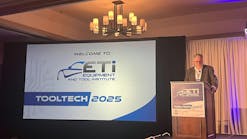Global automotive aftermarket opportunities continue to grow, IHS Markit says
The global automotive aftermarket continues to offer long-term business opportunity, according to industry experts at IHS Markit, who shared insights during the annual Automotive Aftermarket Products Expo (AAPEX).
Mark Seng, director, global automotive aftermarket practice at IHS Markit, set the stage for the industry during his annual assessment of trends for the aftermarket. New vehicle sales are expected to reach nearly 90 million units globally this year, according to IHS Markit automotive forecasts, and global vehicles in operation will exceed nearly 1.4 billion vehicles by 2021, with two billion vehicles in operation expected by 2040. In the U.S., new vehicle sales are expected to reach 17.4 million units this year, a slight decline from last year, before rising to 17.5 million units in 2017.
“Some believe high new vehicle sales is not a good thing for the aftermarket,” Seng said. “However, I don’t see it that way. Anytime you are adding vehicles to the fleet that’s a good thing. It’s our new business pipeline if you will. Simply more vehicles to repair down the road.”
Vehicle miles traveled in the U.S. continues to increase, driven partly by gas prices remaining low. For the past two years, consumers have traveled more than 3 trillion miles per year, which is up from seven years of declining or flat miles traveled in the 2006-2013 timeframe, according to the US Department of Transportation and Federal Highway Administration. From a global perspective, light duty vehicle miles traveled are estimated to reach more than 10 trillion miles this year, and by 2021, vehicle miles traveled in China will increase nearly 200 percent, according to IHS Markit.
Segment shifts affecting vehicle fleet globally
IHS Markit tracks nearly 30 different vehicle segments but just four represented nearly 60 percent of new vehicle registrations in 2015, according to IHS Markit analysis. Crossovers have quickly increased in popularity. Compact CUVs are commanding nearly 19 percent of the market YTD 2016, with traditional compact cars (13.4 percent), mid-size sedans (12.7 percent) and full-size pickup trucks (12.3 percent) rounding out the top four.
Domestic/import mix in U.S. continues to evolve
In the U.S., import brands are outpacing the traditional domestic brands, which allows for growth among import parts providers and service experts, according to IHS Markit. Market share of new vehicle sales held by traditional domestic brands in the U.S. is declining – accounting for just 46 percent in 2015. Imports accounted for just 34 percent of the U.S. market in 2000 and grew to 54 percent in 2015 – and IHS Markit forecasts suggest they will account for 57 percent by 2021. As a percentage of vehicles in operation, cars with import nameplates have risen more than 50 percent since 2002, and likewise, import branded light trucks have nearly tripled in number over the same timeframe.
Fleet continues to age; VIO shifts to create new opportunities
The slowing down of average age growth of the vehicle fleet will create new opportunities for the automotive aftermarket, said Seng. The aftermarket definitely felt the 40 percent drop in new light vehicle registrations experienced during the downturn in 2008-10. However, the impact of that on the vehicles in operation indicates the volumes of vehicles in the new to five years old category will grow 16 percent by 2021, while vehicles in the six to 11 year-old range will grow just 5 percent, and vehicles that are 12+ years old will grow 10 percent, according to IHS Markit. The oldest vehicles on the road are growing the fastest – with vehicles 16 years and older expected to grow 30 percent from 60 million units today to 81 million units in 2021. IHS Markit research also indicates 20 million vehicles on the road in 2021 will be more than 25 years old.
The aftermarket must be prepared to address the needs of the aging vehicle population – as more repair opportunities will abound for these older vehicles, including from consumers who may be a vehicle’s third or fourth owner. A key brand strategy could be one that includes more attractive, value options for repairing these older vehicles.
Fuel economy standards accelerating new technology and vehicle electrification
Technology implementation is accelerating quickly and will influence the aftermarket as it continues to evolve. New premium vehicles today rely on more than 100 million lines of code to operate their complex systems, with more than 50 onboard computers to deliver a world-class user experience in new vehicles, based on IHS Markit estimates. This level of technical sophistication is virtually unmatched by other industries.
This technological complexity is the foundation for the coming autonomous and connected car. Even though these vehicles will not dominate the VIO for another couple of decades, the technology found on those future vehicles are entering repair bays more and more. The aftermarket must be prepared and educate the consumer that it has the parts and trained technicians to repair these next generation vehicles.

